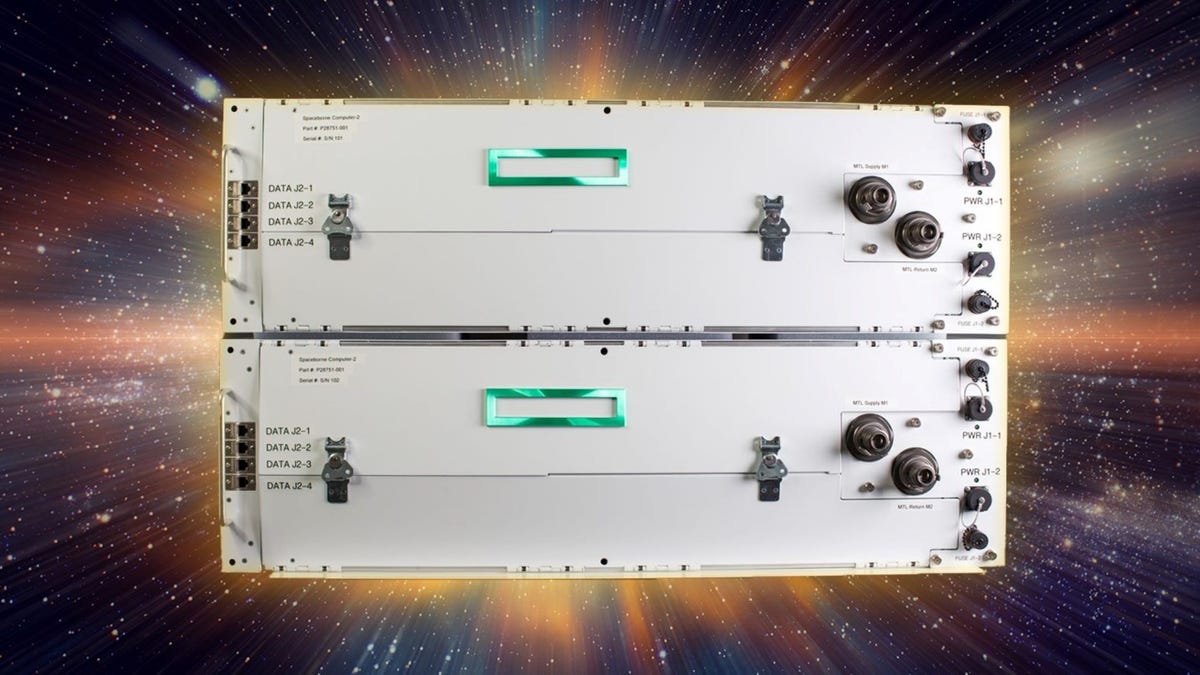
HPE
A small much less than a calendar year just after it was put in on the Worldwide Space Station, HPE’s Spaceborne Personal computer-2 (SB-2) has previously productively completed 24 exploration experiments, HPE mentioned Monday. Working with the effective SB-2, HPE’s companions used AI to examine astronaut gloves for harmful flaws, enabled 3D priting in space, and employed AI to review satellite imagery of Earth.
The experiments demonstrate the way advanced in-area computing methods can help astronauts assess facts devoid of acquiring to ship it back again to Earth. Building AI-enabled units potent sufficient for substantial true-time facts processing — and rugged more than enough to withstand circumstances in area — will help astronauts develop into much more self-ample as they journey to the Moon, Mars, and past.
The experiments display “new prospects for house exploration and milestones for humanity,” Dr. Mark Fernandez, HPE’s Spaceborne Laptop or computer-2 principal investigator, explained in a assertion.
The SB-2 was launched into area in February 2021, immediately after its predecessor, the HPE Spaceborne Laptop, concluded a profitable proof-of-notion mission on board the ISS. The HPE devices are designed to face up to the harsh bodily ailments of area — variables like radiation, photo voltaic flares, micrometeoroids, unstable electrical electric power, and irregular cooling. The SB-2 delivers 2 times as a lot compute speed as its predecessor and is geared up with GPUs to efficiently procedure graphic-intense information, such as photographs of polar ice caps on earth or health-related x-rays. The GPUs also support unique jobs applying AI and device learning.
In one of the SB-2 experiments, NASA and Microsoft produced a glove analyzer AI product to detect damage on astronaut gloves. These gloves are made use of on spacewalks, when astronauts are restoring equipment or installing new instruments on the ISS. The AI design was utilised to speedily assess pics and recorded video clip taken in area of not too long ago-worn gloves. If harm was detected, an AI-annotated photo was produced in space and quickly sent to Earth, highlighting regions for further more review by NASA engineers.
Another experiment targeted on 3D printing, which could assistance astronauts fix or construct new machines on lengthy journeys. Scientists from Cornell University formulated a modeling software that can simulate 3D printing of metallic sections and even predict any failure or deformation that may perhaps consequence from printing in the harsh circumstances of house. The software package was productively examined on SB-2, validating that it can be utilised in place to digitally simulate a part and have an understanding of how it will accomplish in truth.
Meanwhile, NASA Jet Propulsion Laboratory (JPL) applied SB-2 to test deep learning inference networks developed to analyze images from Earth right after a disaster. JPL observes Earth from space to analyze science and local weather, as perfectly as to support reaction attempts just after disasters like floods and hurricanes. Researching satellite imagery on board long term spacecraft could assistance with immediate help.



More Stories
New low prices on phones, tablets, and more
Watch Adam Savage Go “Hands On” With the Original Enterprise From ‘Star Trek’ – Review Geek
Google Messages reactions about to expand in choices